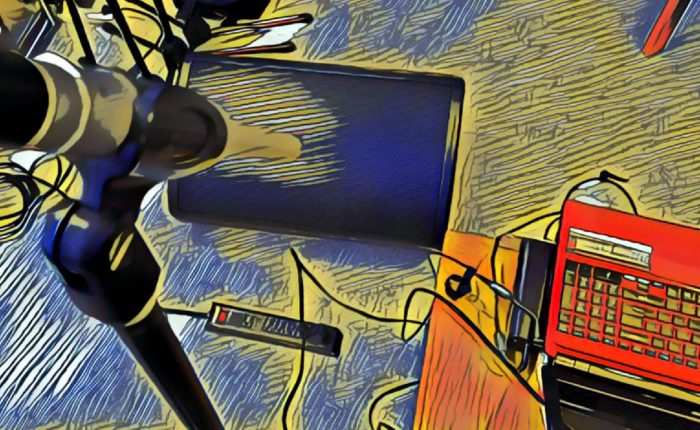I might have discovered something, or I might not.
Please Remember:
The opinions expressed are mine only. These opinions do not necessarily reflect anybody else’s opinions. I do not own, operate, manage, or represent any band, venue, or company that I talk about, unless explicitly noted.

 Want to use this image for something else? Great! Click it for the link to a high-res or resolution-independent version.
Want to use this image for something else? Great! Click it for the link to a high-res or resolution-independent version.Over the last little while, I’ve done some shows where I could swear that something strange was going on. Under certain conditions, like with a loud, rich vocal that had nothing else around it, I was sure that I could hear something in FOH distort.
So, I tried soloing up the vocal channel in my phones. Clean as a whistle.
I soloed up the the main mix. That seemed okay.
Well – crap. That meant that the problem was somewhere after the console. Maybe it was the stagebox output, but that seemed unlikely. No…the most likely problem was with a loudspeaker’s drive electronics or transducers. The boxes weren’t being driven into their limiters, though. Maybe a voice coil was just a tiny bit out of true, and rubbing?
Yeesh.
Of course, the very best testing is done “In Situ.” You get exactly the same signal to go through exactly the same gear in exactly the same place. If you’re going to reproduce a problem, that’s your top-shelf bet. Unfortunately, that’s hard to do right in the middle of a show. It’s also hard to do after a show, when Priority One is “get out in a hurry so they can lock the facility behind you.”
Failing that – or, perhaps, in parallel with it – I’m becoming a stronger and stronger believer in objective testing: Experiments where we use sensory equipment other than our ears and brains. Don’t get me wrong! I think ears and brains are powerful tools. They sometimes miss things, however, and don’t natively handle observations in an analytical way. Translating something you hear onto a graph is difficult. Translating a graph into an imagined sonic event tends to be easier. (Sometimes. Maybe. I think.)
This is why I do things like measure the off-axis response of a cupped microphone.
In this case, though, a simple magnitude measurement wasn’t going to do the job. What I really needed was distortion-per-frequency. Room EQ Wizard will do that, so I fired up my software, plugged in my Turbos (one at a time), and ran some trials. I did a set of measurements at a lower volume, which I discarded in favor of traces captured at a higher SPL. If something was going to go wrong, I wanted to give it a fighting chance of going wrong.
Here’s what I got out of the software, which plotted the magnitude curve and the THD curve for each loudspeaker unit:
I expected to see at least one box exhibit a bit of misbehavior which would dramatically affect the graph, but that’s not what I got. What I can say is that the first measurement’s overall distortion curve is different, lacking the THD “dip” at 200 Hz that the other boxes exhibit, significantly more distortion in the “ultra-deep” LF range, and with the “hump” shifted downwards. (The three more similar boxes center that bump in distortion at 1.2 kHz. The odd one out seems to put the center at about 800 Hz.)
So, maybe the box that’s a little different is my culprit. That’s my strong suspicion, anyway.
Or maybe it’s just fine.
Hmmmmm…



